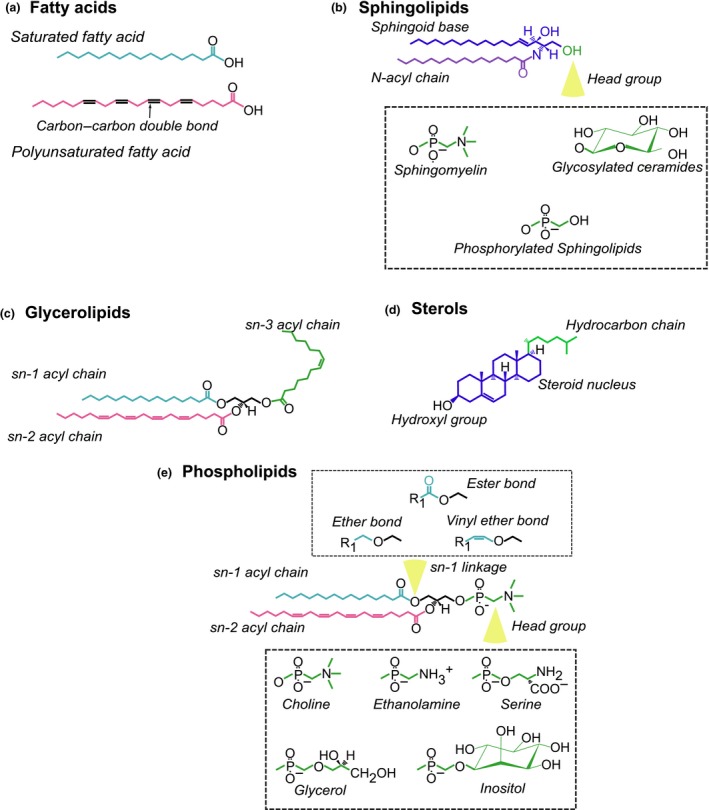Figure 2.

Representative chemical structures of the main lipid classes in eukaryotic cells. (a) Fatty acids: Consisting of a hydrocarbon chain connected to a carboxyl group. The hydrocarbon chain can either be saturated or be unsaturated, indicated by the presence of a carbon–carbon double bond (unsaturated). (b) Sphingolipids: An acyl chain is connected to a sphingoid base (typically sphinganine) to produce ceramide. Through further metabolic reactions, the head group region can change to yield complex sphingolipids such as sphingomyelin and glycosylated ceramides. (c) Glycerolipids: Fatty acids can be attached at the sn‐1, sn‐2 and sn‐3 positions of the glycerol backbone to produce monoacylglycerol (MAG) [1 fatty acid], DAG [2 fatty acids] and TAG [3 fatty acids]. (d) Sterols: An isoprenoid‐based lipid with four hydrocarbon rings where a hydroxyl group located on one end and a hydrocarbon chain attached at another. (e) Phospholipids: Two fatty acids connected to a glycerol backbone at the sn‐1 and sn‐2 position. At the sn‐3 position is a variable head group which produces the major phospholipid species in eukaryotes. Further, the sn‐1 linkage defines can alter the phospholipid species.
